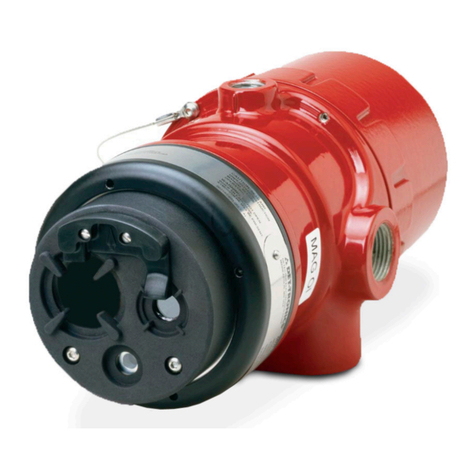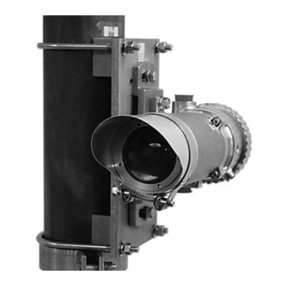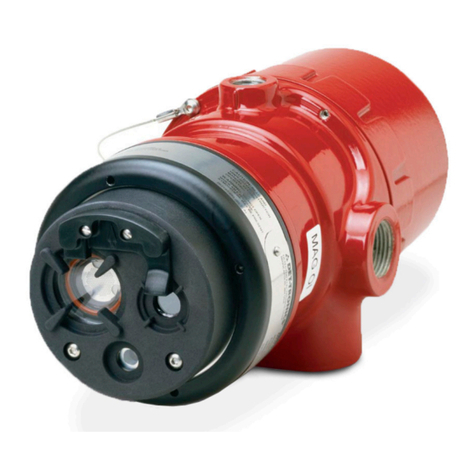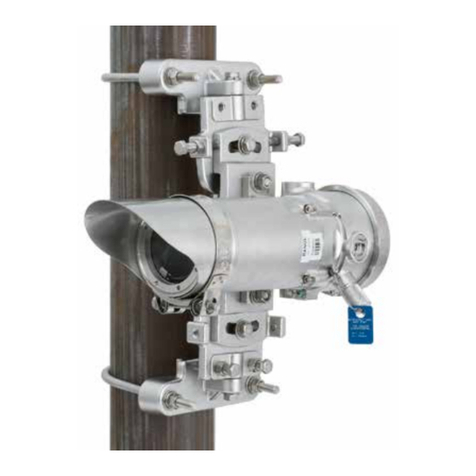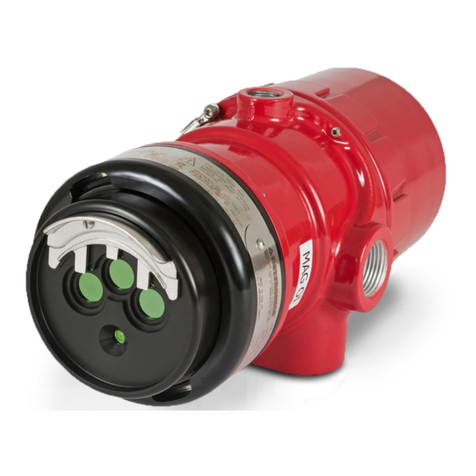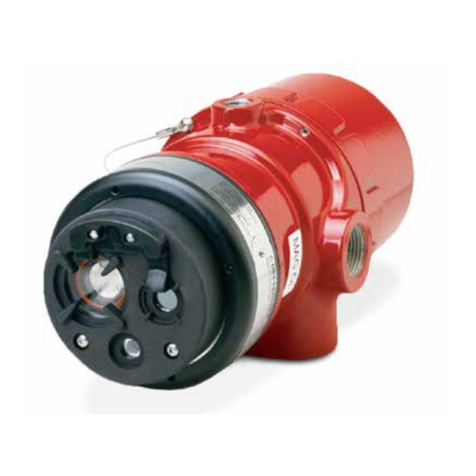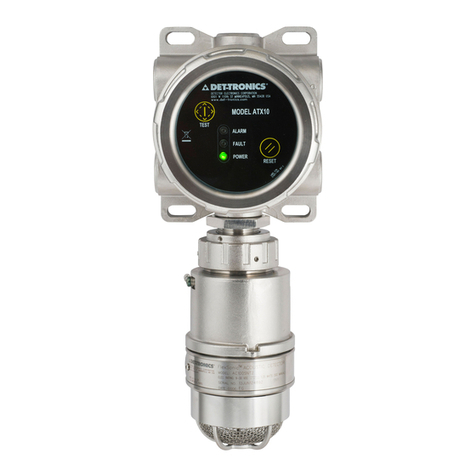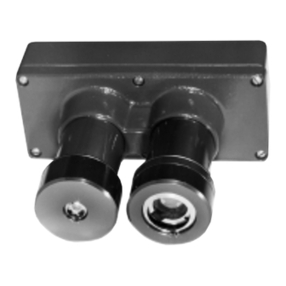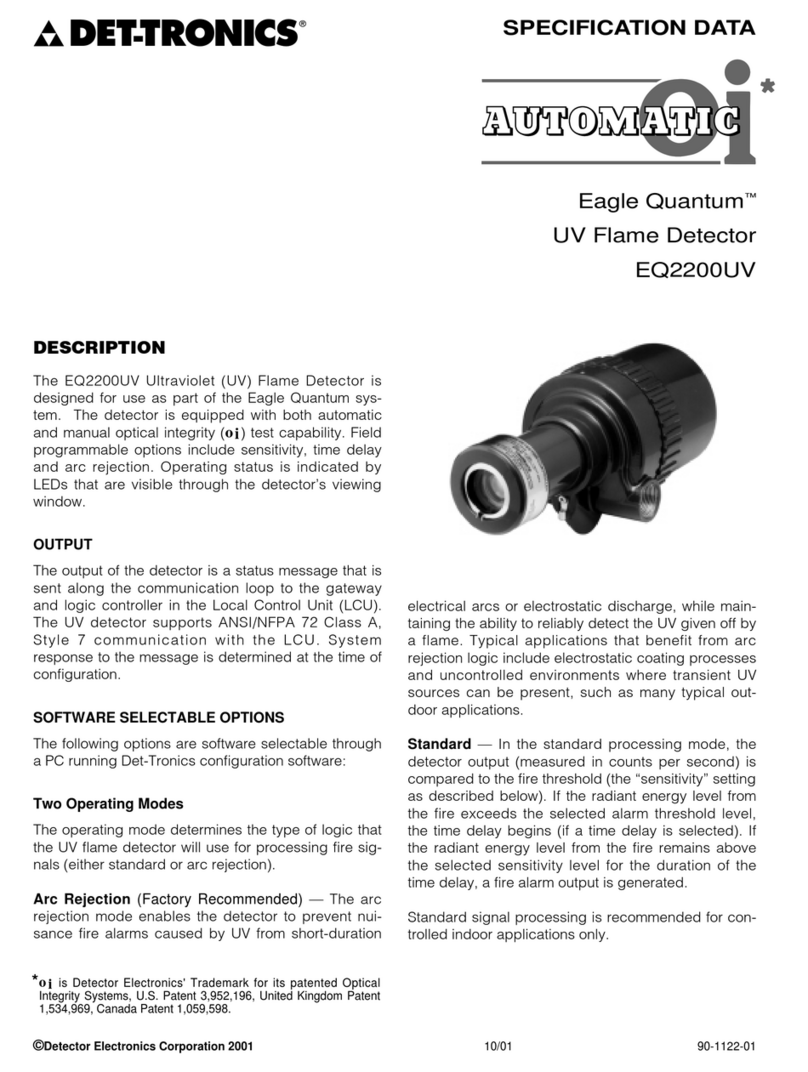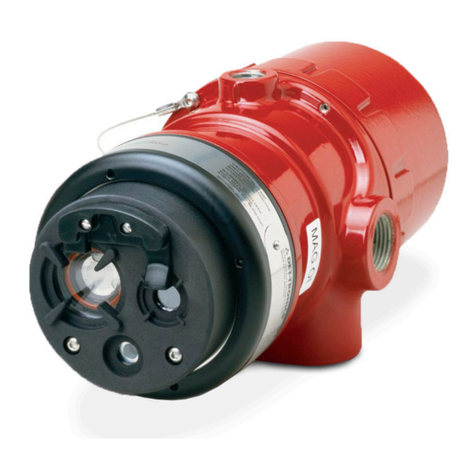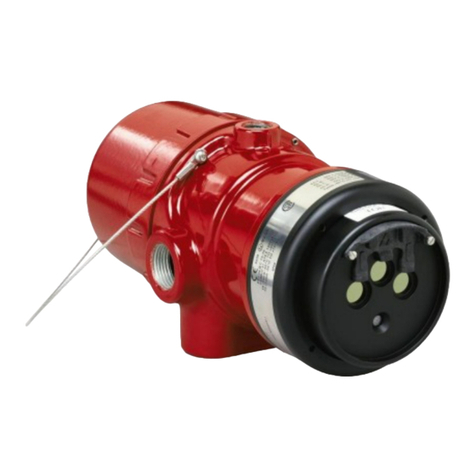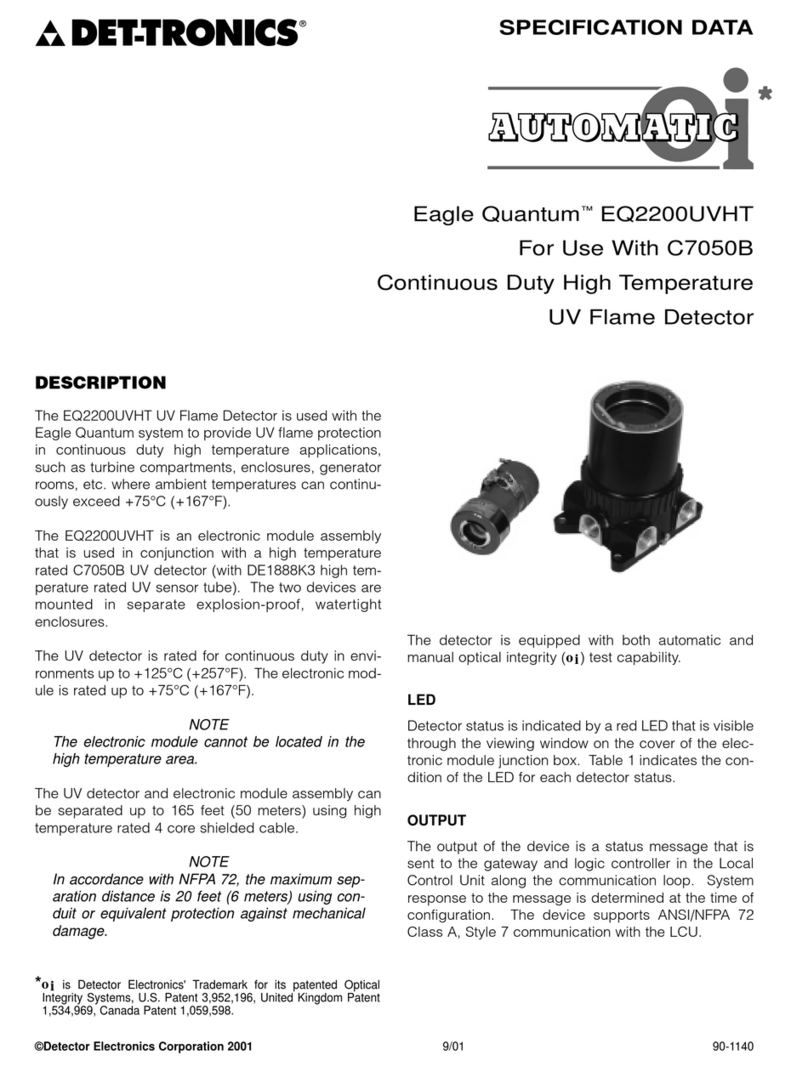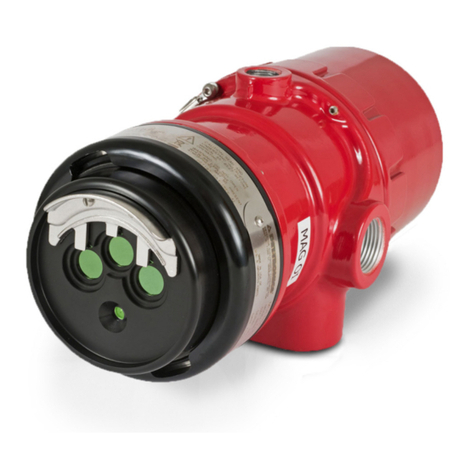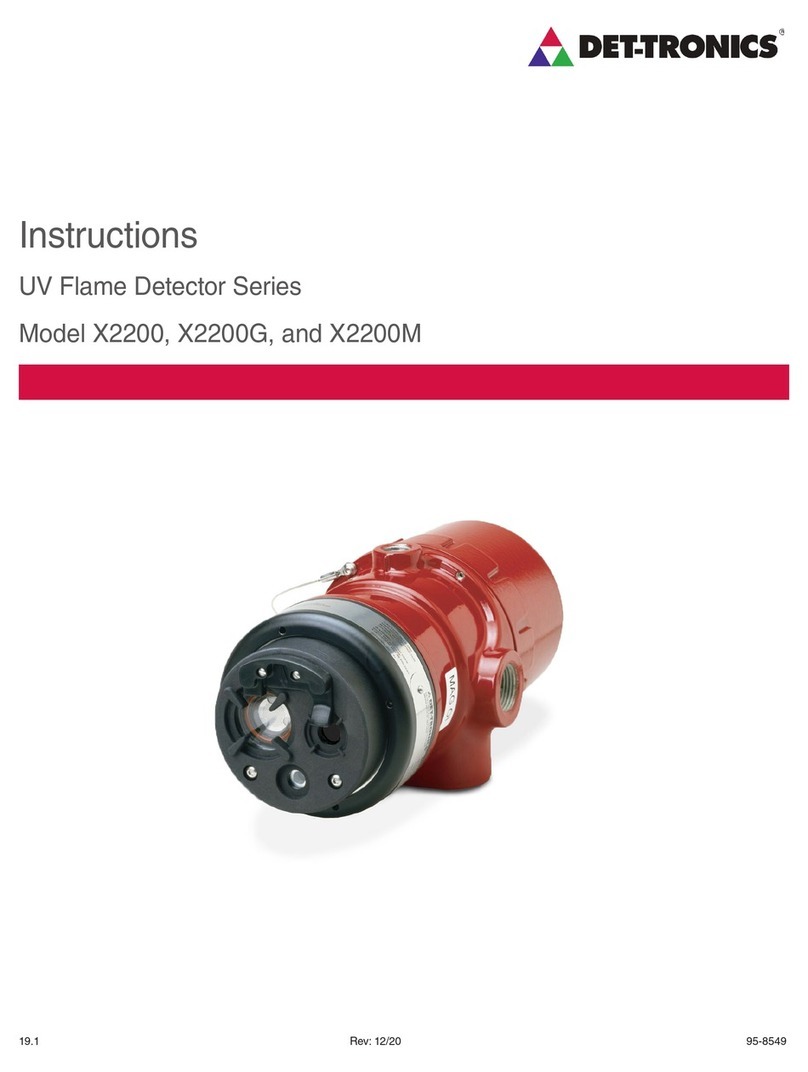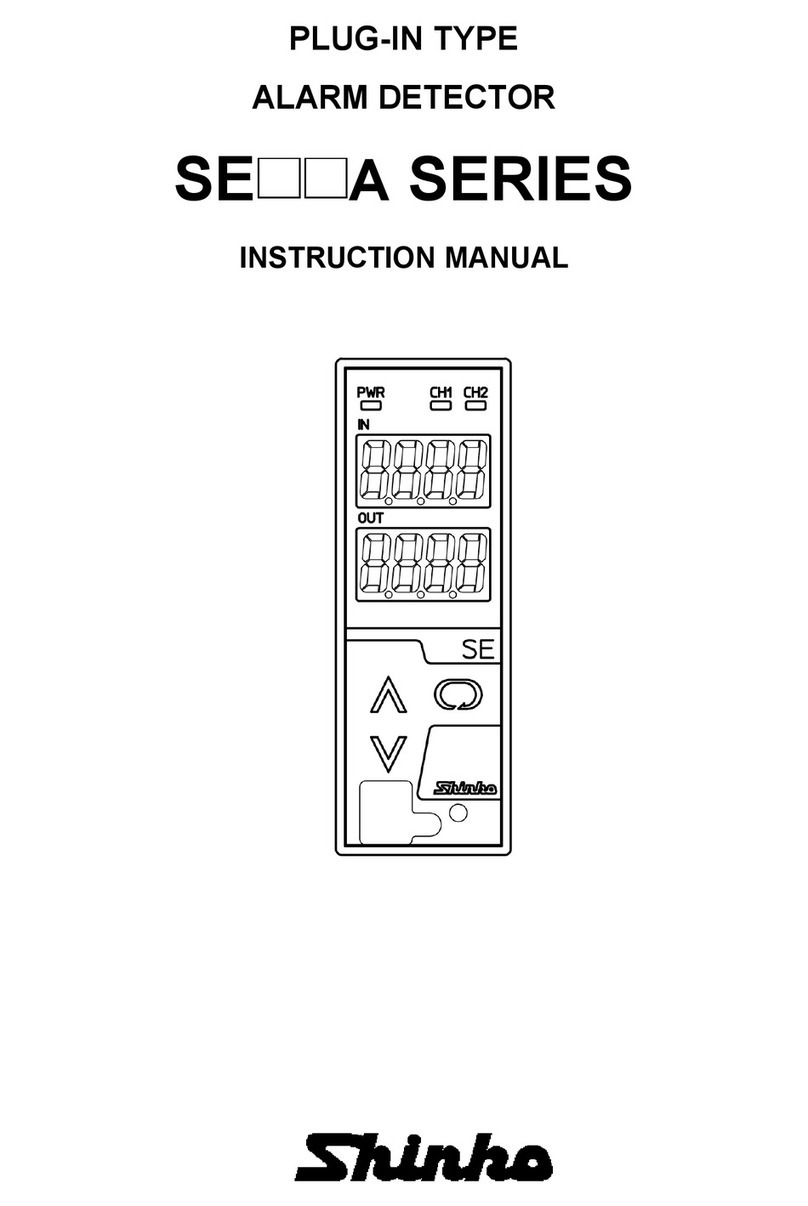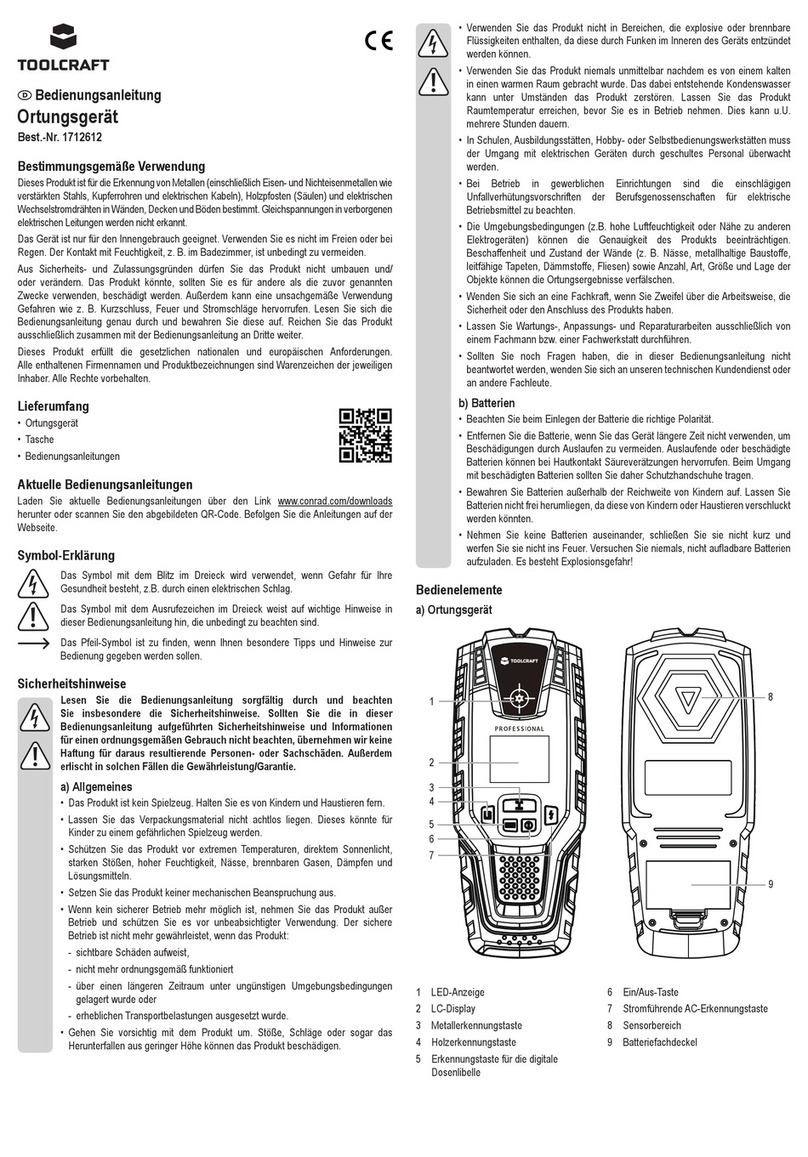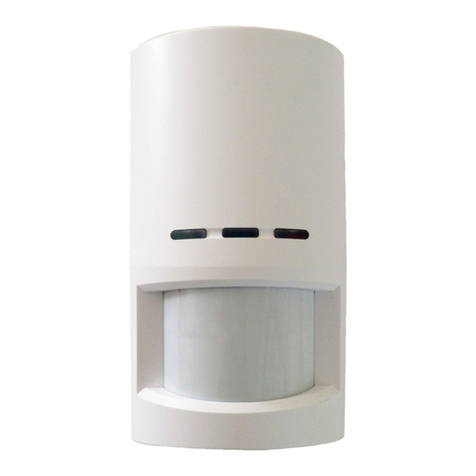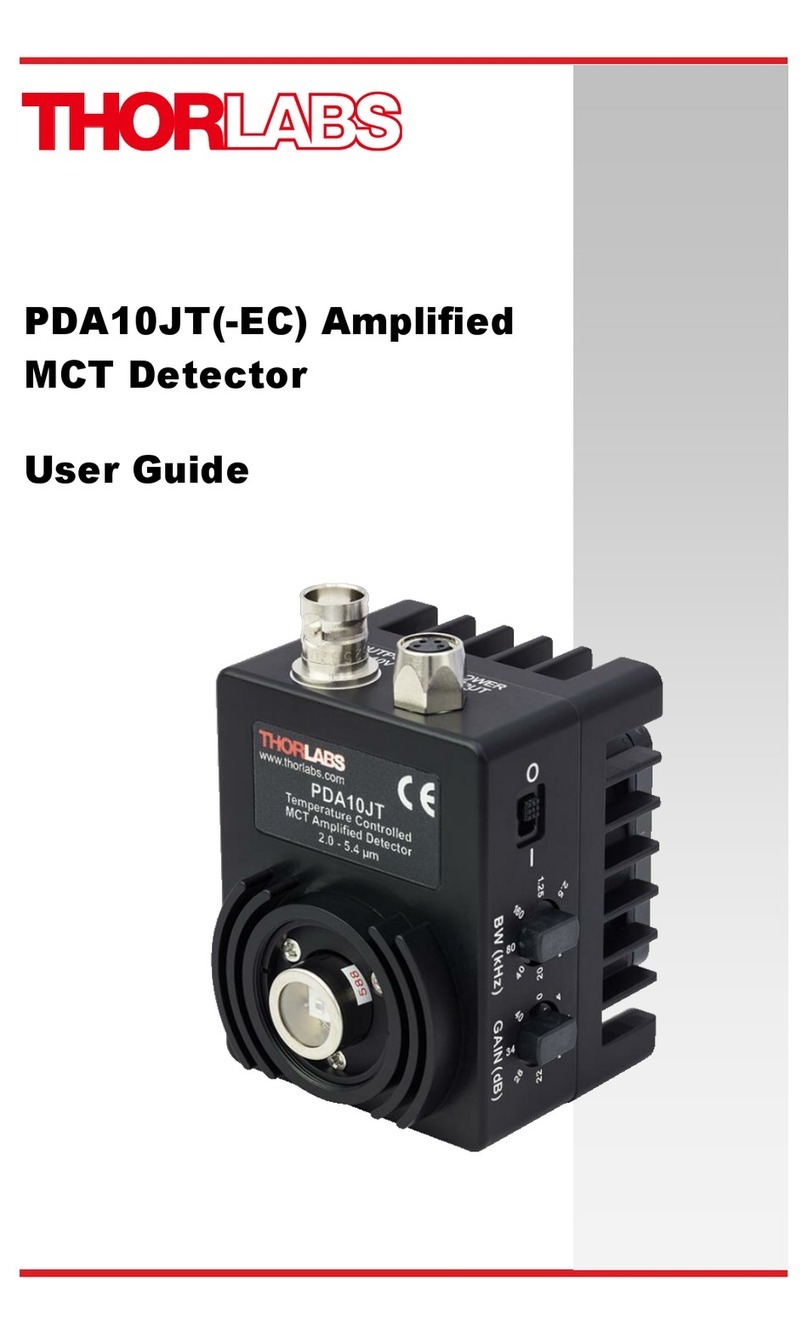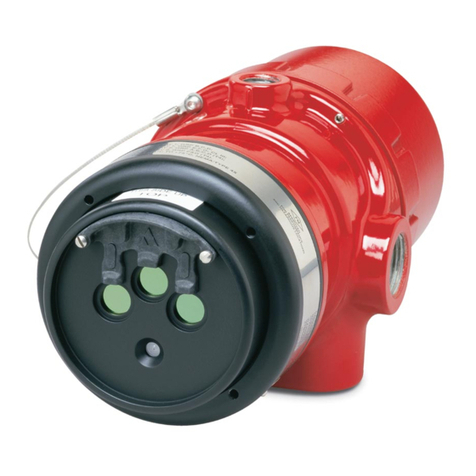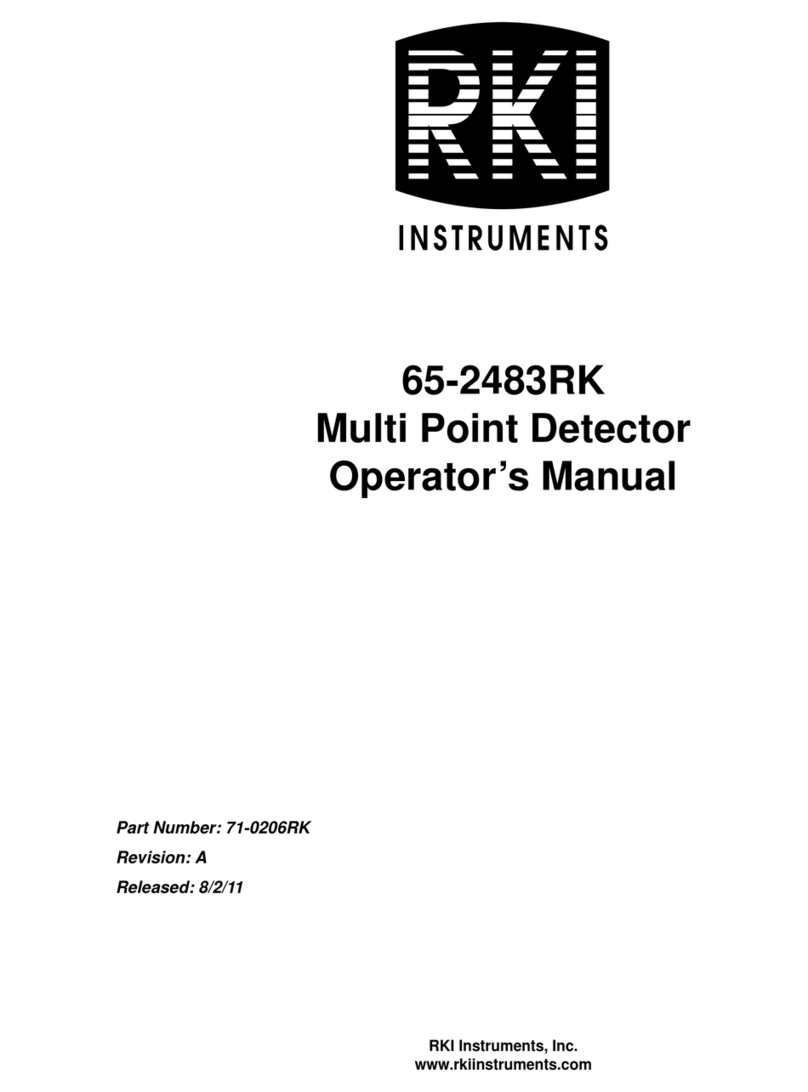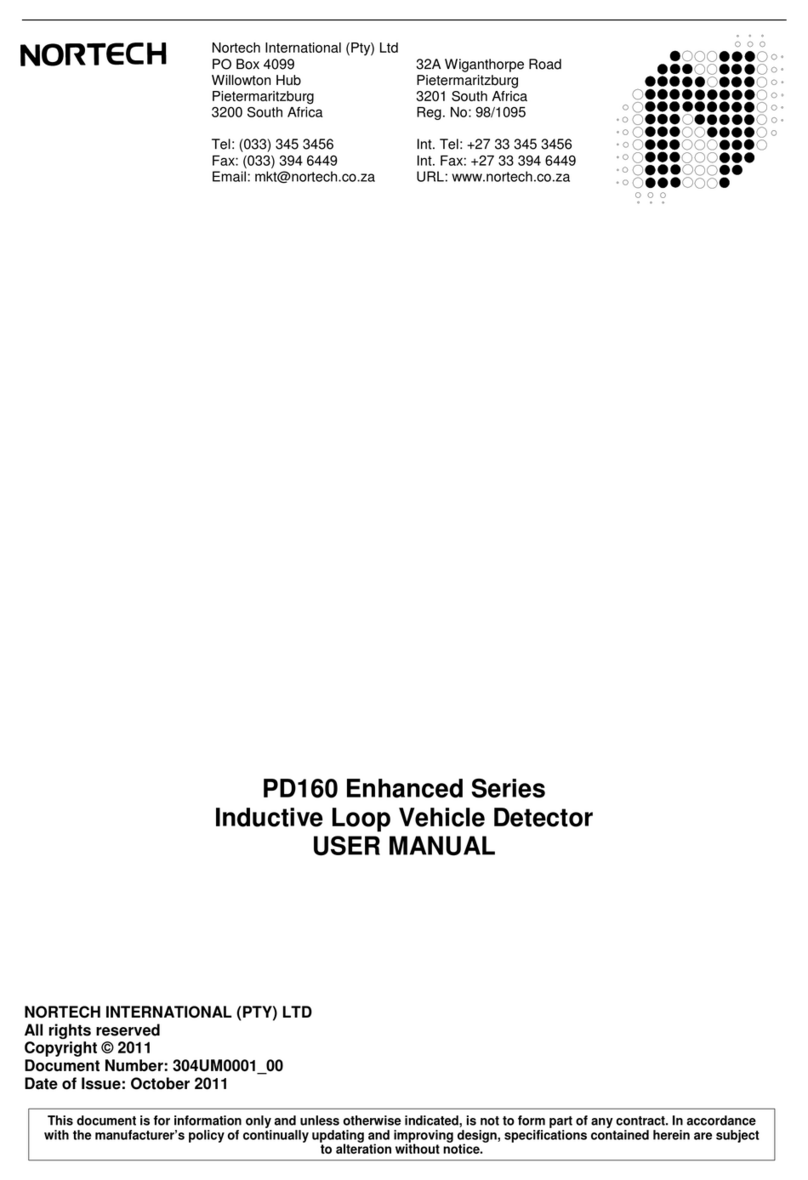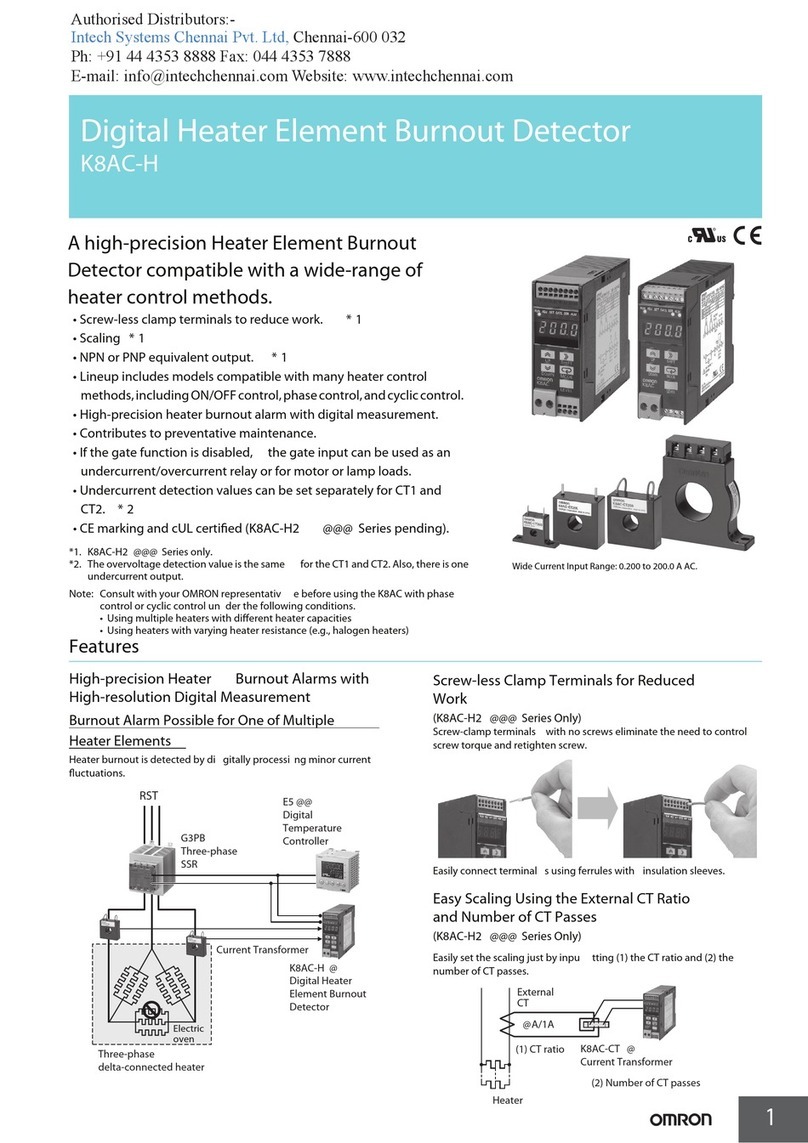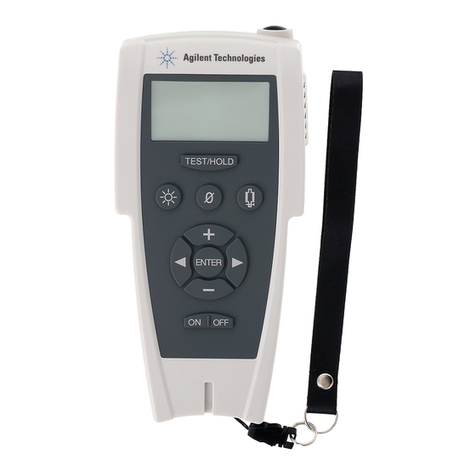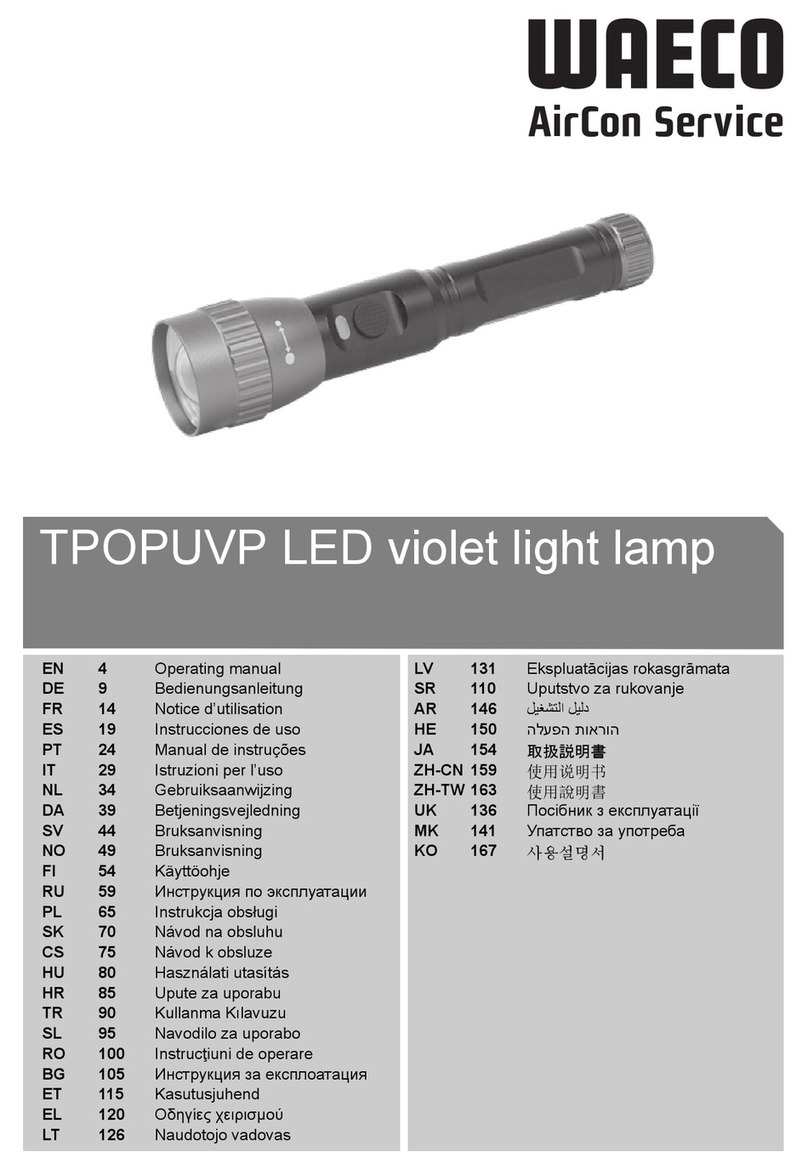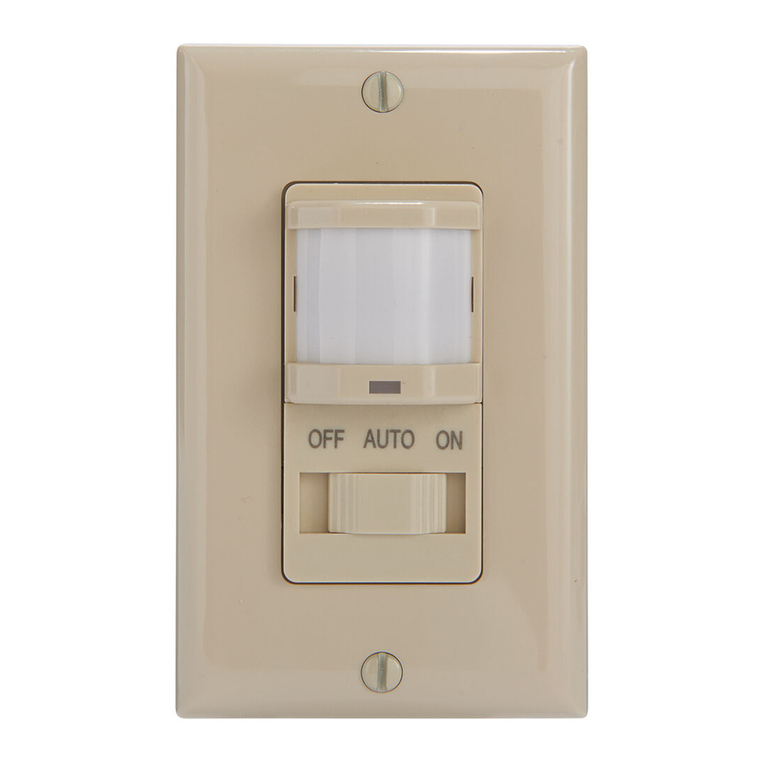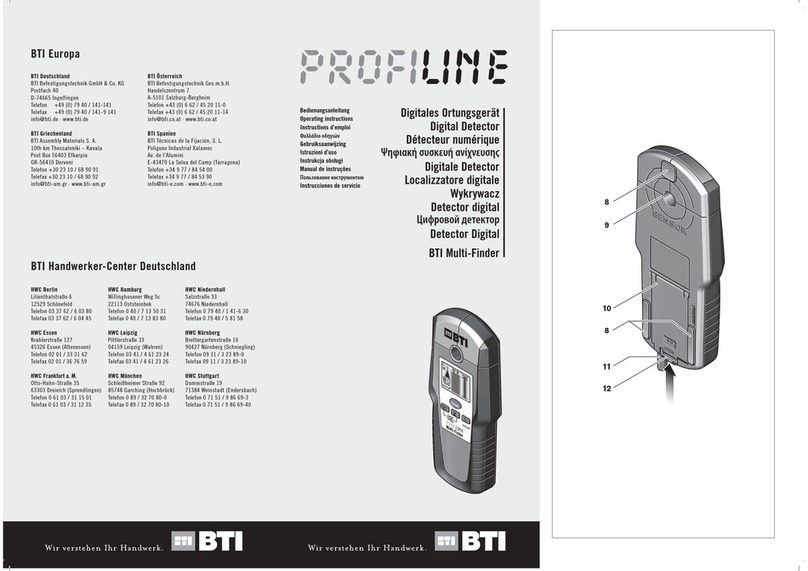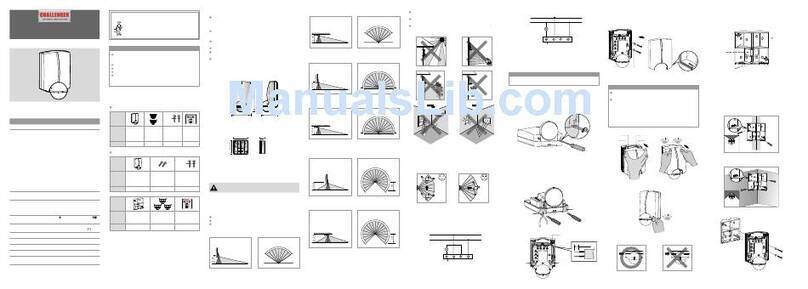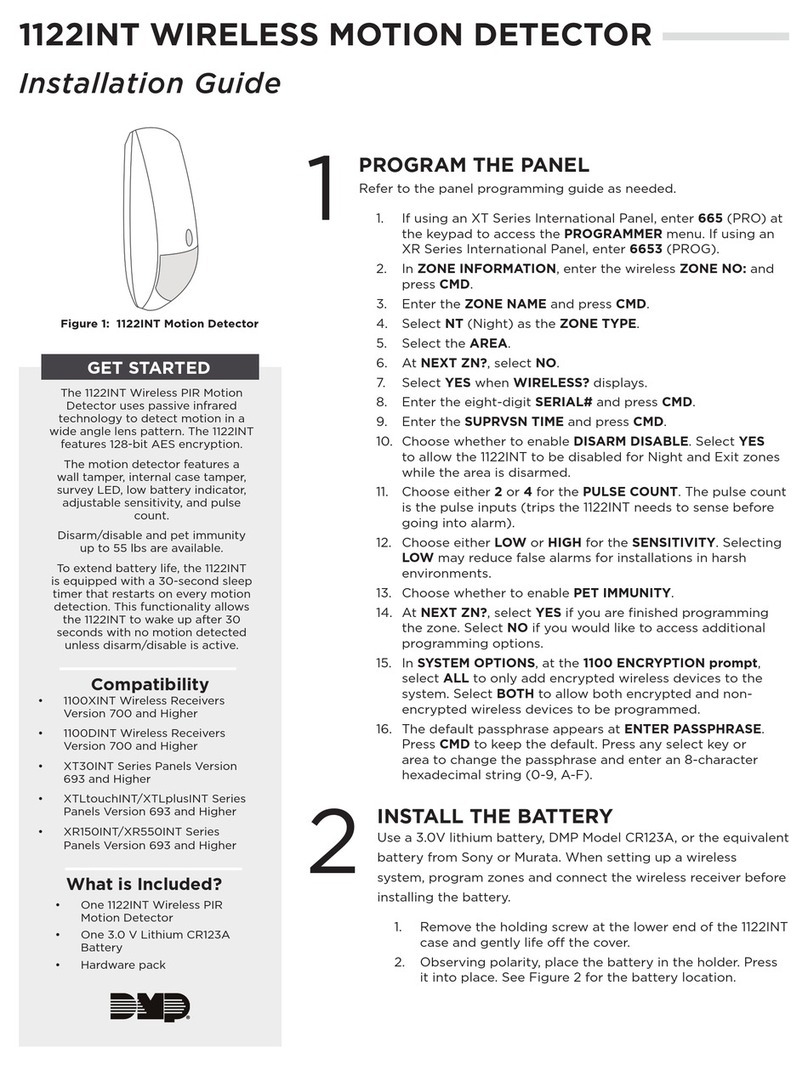2.2 95-87144
OPTIONAL RELAYS
The
LS2000
can be furnished with factory
installed relays — two programmable alarm
relay outputs and one fault relay output. All
relays are sealed and provide form C (NO/
NC) contacts. The high and low alarm relays
are programmable, and can be set for latching
/ non-latching operation, and a normally
energized / de-energized coil (see Table 3).
The low alarm cannot be set above the high
alarm threshold. Alarm configuration can be
done with the HART or MODBUS interface.
The onboard multi-color LEDs indicate a LOW
alarm condition via a flashing red color, and a
HIGH alarm condition via a steady red color.
Latched alarms can be reset using the internal
magnetic switch, an external switch connected
to the calibration line terminal, a HART Field
Communicator, or MODBUS communication.
A short-duration magnetic switch activation of
1 second will reset latched alarms. Holding
the magnetic switch closed for a 3 second
duration will start the calibration sequence.
When the optional relays are ordered, the
LS2000
receiver is certified for Ex d operation.
OPTIONAL COMMUNICATION LINK
By connecting the transmitter and receiver
via a three-wire shielded cable, an optional
“communication link” can be created between
the two devices.
The communication link offers the following
advantages:
1. Single point system diagnostics – The link
offers the ability to view device variables
of the receiver while connected to the
transmitter, or vice versa (using a HART
handheld or MODBUS device). These
variables include signal strength, status, and
configuration parameters such as alarm set
points, heater settings, gas type, etc.
2. Dynamic lamp power – The link enables
the system to optimize lamp power per the
application. This optimization only happens
during the zero calibration process.
3. Synchronized LEDs on each device can
signal a common system status condition.
Without the link, the transmitter is unable to
signal alarm status.
4. Transmitter variables can be configured via
connection to the receiver. Configurable
transmitter variables include lamp power and
heater settings.
NOTE
Alarm setpoints in the receiver cannot be
changed from the transmitter.
5. The communication link provides the ability to
initiate Calibration from either the transmitter
or receiver.
For retrofit applications where an inter-
connecting wire is not available or possible, the
system can operate without the link. If the link
is not connected, the system will not indicate a
“link fault.”
A “link fault” feature can be enabled (using a
HART handheld or MODBUS device), which
will indicate a fault if the link is broken. The “link
fault” can only be detected and annunciated by
the receiver.
NOTE
The default setting for the”link fault”
feature is Disabled.
NOTE
All third-party performance and
hazardous location approvals apply
with and without the communication link
connected.
HISTORY LOGS
Non-volatile memory is provided in the receiver
to save a record of the 100 most recent
calibrations and 1000 most recent alarm/fault
events. Operating temperature and voltage
of the receiver are also recorded with each
event log. A real time clock is provided for time
stamping events. This information is accessible
using HART or MODBUS communication.
